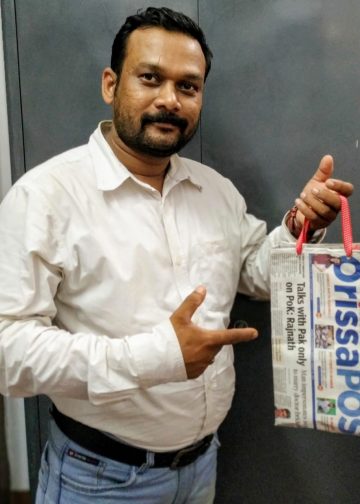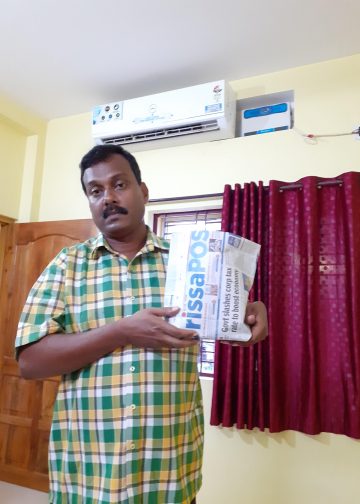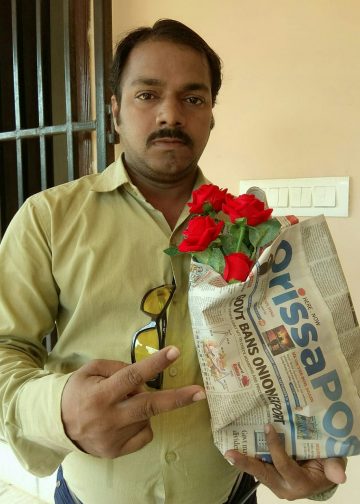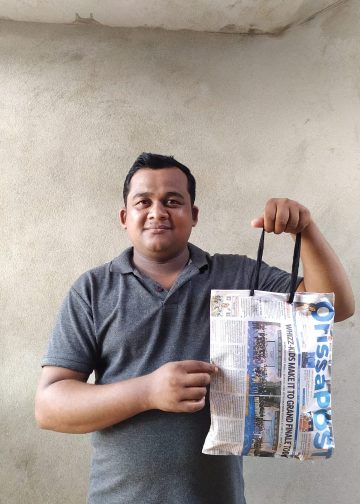By Ananta Kishore Jena
There is an essence in everything we see and practice in our day to day traditions, especially those pertaining to the Nabakalebar (new incarnation) rituals of Lord Jagannath.
Let us look into the truth behind the four idols of Lord Jagannath temple. The great carpenter who had constructed the idols, could have made it in an anthropomorphic (human prototype) manner. What is sculpted by Him behind this idolic essence is the eternal existence of Paramatma (Supreme Being) in a symbolic way. He Himself had built the idols as we see today in the Srimandir. He had also composed the ‘Gita Gobinda’ of Sri Jayadev (for which Sri Jayadev was wavering and was in a fix). A general opinion was that due to the immature intellect of a woman (Queen Gundicha), the hands of the Lord are incomplete (half done). The gross appearance and existence of the universal Lord is Balabhadra. He has eyebrows. He has many symbolic limbs like a living being. He has also a colour of his body. He rode black horse while he undertook expedition with Lord Jagannath to Kanchi during the regime of King Purushottam Dev. The colour of goddess Subhadra is yellow. She is Maya Shakti (Illusory power) between Jiva (Balabhadra) and Brahma (Jagannath). This illusory power has separated the two by outward ignorance.
Lord Jagannath has no shape or colour or physical organs worth their name. Devi Subhadra is subtle, Lord Balabhadra is gross, and Lord Jagannath beyond gross, subtle and inexplicable. Sudarshan is the gross might of the Lord. Together, the Lord is omniscient and omnipotent. This is the essence of the Lord. For this reason, religious leaders of various sects and faiths have visited the temple.
What is this Nabakalebara? It is generally believed that a man (jiva) takes his birth on the earth and after some years he leaves his body and takes birth in another body. This is Nabakalebara. When our clothes are torn, we wear a new set. Hence the jibatma of this body. It takes a new garment (body) when the present gets old and diseased. Thus, says Sri Krishna in Bhagabat Geeta to the humanity through warrior Arjuna. He decides the longevity of the body before it takes a new birth. But it is decided ahead in the Nabakalebara system of Lord Jagannath. What will happen if there is no Nabakalebara at all?
Generally, a person sheds his mortal coil during a bad time (for him only). The human beings who come and live in this world are all conditioned by time and space. There is tremendous influence of time and space on a being: Be it dust, stone, living being or incarnation. The difference is that the avatari or Mahatma knows his worldly end which a common man does not know. Only the Atma or Paramatma (Soul or the Supreme Soul) is beyond the influence of time and space. The Leap Ashadha month as per Hindu almanac is considered inauspicious and is called Mala. No new and auspicious work is undertaken during this period. The Nabakalebara of the four deities is taken up before the advent of this Mala (inauspicious time).
When God takes ‘human form’, His body is called ‘Vigyana ghanamaya’ (dominated by Vigyana Kosha). It is full of Satwaguna. Satwa is an embodiment of positive qualities like truthfulness, kindness, love, peacefulness, happiness and bliss. So He has no body consciousness or ego like a common man. Our body has five sheaths (Kosha) – Annamaya (made out of food), Pranamaya (made out of respiratory air), Manamay (made of mind), Bigyanamay (made out of intuition and wisdom) and Anandamaya (made out of bliss). There is Brahma or Paramatma beyond the body. It is within and without but the body cannot touch it. The five sheaths are under three Gunas (qualities: Satwa, Raja and Tama). The amount of bliss depends upon one’s transit from Ananamaya to Anandamaya state. It is the end of journey when one attains his true self that is Brahman when one leaves Satwic guna as well as koshas. Without Paramatma or Brahma (Siva), the jiva (being) is like a corpse. That’s why without the Brahma the four deities are incomplete.
What is this Brahma? In the words of Paramahansa Sri Ramakrushna when we dip an idol of salt in the ocean, it cannot come back and describe what the sea (Brahman) is like. It cannot, as its very existence is lost there. That’s why Brahma or Paramatma is unreachable, unknown to sensory and worldly beings. Whatever is conceived is only an impression of the consciousness of the Brahman.
It is believed that whosoever (priest) transfers the Brahman from the old deity to the new, dies days after the ritual. The belief is not based on facts. If, by chance, one dies, it is due to a fear psychosis that death is chasing (It chases all of us). The mystery involved in the ritual coupled with curiosity has caused the disturbance in the tradition this time.
It is said in the Upanishads that “Brahmabid Brahmeiba Bhabati”. It means he who knows Brahma becomes the Brahman. In other words, Brahman can know Brahman (Himself). The substance which loses its identity in the ocean becomes one with the ocean. This symbolism leads us to realise that we are Atman (Brahman) not this physical body made of five elements called Mahabhutas. Nabakalebara is an essence of the Drama which is enacted in this cosmos at regular intervals.
Rath Yatra is also an essence of Vedic wisdom. One who sees the idol of Lord Jagannath on the wooden car will be emancipated from the world. The vedic dictum says: Rathe to Bamanam drustwa punarjanma navidyate”. (One who sees Lord Jagannath on the chariot will not take rebirth at all) But this is symbolic. Unless one realises the Lord in real life, one cannot attain salvation. When one sees Brahman inside the Lord, he becomes one with the Brahman. But Brahman is not visible to the eyes. It is a process of self-realisation!
The author is the director of Sports and Youth Services, Government of Orissa, Bhubaneswar






































